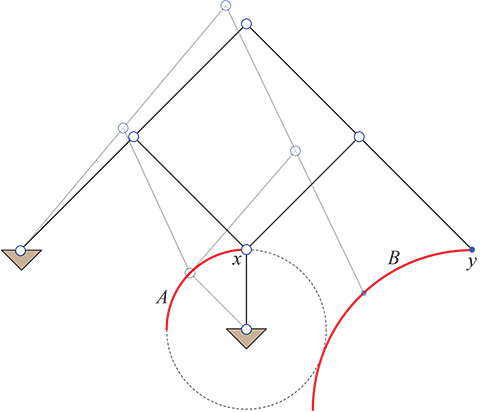Q. Is there a linkage in the plane that traces out a circle $C$ in such a manner that the interior of the disk bounded by $C$ is never intersected by any link througout the motion?
What I mean by "a linkage in the plane" is best illustrated
by the famous Peaucellier linkage, which traces out
a straight line segment:
(Wikipedia image.)

Some vertices are "pinned to the plane."
All vertex joints are universal in the sense
of allowing full $360^\circ$ motion.
All links are rigid segments, which can pass over one
another in a physical, layered model, e.g.,

(Image from this How Round Is Your Circle web page.)
Of course it is trivial without the restriction that the links not intersect the interior of $C$: One radial link pinned to the center of $C$ suffices. And the challenge in the Peaucellier linkage was to convert the natural circular motions of linkage components into straight-line motion. Here I am seeking a vertex of the linkage to follow a natural circular motion, but with the restriction to not intersect the interior of that circle $C$. Following a subarc of $C$—say, a semicircle—without intersecting the interior of $C$, would also be quite interesting.
It may be that the 19th-century masters (Peaucellier, Lipkin, Watt, Chebyshev, et al.) did not investigate this question. But perhaps there is an easy construction I am not seeing...?
Here is a version of TMA's idea. The pantograph shown scales by $\times 2$: As joint $x$ traces arc $A$, endpoint $y$ traces arc $B$, from the exterior of $B$'s disk:

